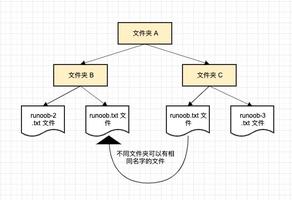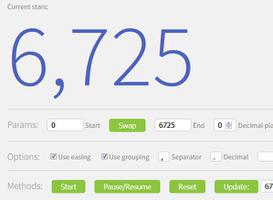JavaScript等效于jQuery的$ .ready()
好的,这可能只是一个愚蠢的问题,尽管我敢肯定会有很多其他人不时问同样的问题。我,我只是想以任何一种方式100%确定它。有了jQuery,我们都知道精彩之处
$('document').ready(function(){});但是,假设我要运行一个用标准JavaScript编写且没有库支持的函数,并且我想在页面准备就绪后立即启动一个函数。解决这个问题的正确方法是什么?
我知道我可以做:
window.onload="myFunction()";…或者我可以使用body标记:
<body onload="myFunction()">…或者我什至可以尝试在页面底部输入所有内容,但结尾body或html标记类似:
<script type="text/javascript"> myFunction();
</script>
什么是跨浏览器(旧/新)兼容方法以jQuery的方式发布一个或多个函数$.ready()?
回答:
在没有为您提供所有跨浏览器兼容性的框架的情况下,最简单的操作就是将调用代码放在正文末尾。它比onload处理程序执行起来更快,因为它仅等待DOM准备就绪,而不等待所有图像加载。而且,这适用于所有浏览器。
<!doctype html><html>
<head>
</head>
<body>
Your HTML here
<script>
// self executing function here
(function() {
// your page initialization code here
// the DOM will be available here
})();
</script>
</body>
</html>
对于现代浏览器(来自IE9和更高版本以及任何版本的Chrome,Firefox或Safari),如果您希望能够实现类似jQuery的$(document).ready()方法,可以从任何地方调用(而不必担心调用脚本的位置),您可以只使用以下内容:
function docReady(fn) { // see if DOM is already available
if (document.readyState === "complete" || document.readyState === "interactive") {
// call on next available tick
setTimeout(fn, 1);
} else {
document.addEventListener("DOMContentLoaded", fn);
}
}
用法:
docReady(function() { // DOM is loaded and ready for manipulation here
});
如果您需要完全的跨浏览器兼容性(包括IE的旧版本)并且不想等待window.onload,那么您可能应该看看jQuery之类的框架如何实现其$(document).ready()方法。根据浏览器的功能,它相当复杂。
让您稍微了解一下jQuery的功能(无论放置script标记的位置都可以使用jQuery)。
如果支持,它将尝试标准:
document.addEventListener('DOMContentLoaded', fn, false);后退到:
window.addEventListener('load', fn, false )或对于较旧版本的IE,它使用:
document.attachEvent("onreadystatechange", fn);后退到:
window.attachEvent("onload", fn);而且,我不太了解IE代码路径中的一些变通办法,但看起来它与框架有关。
这是.ready()用普通javascript编写的jQuery的完全替代:
(function(funcName, baseObj) { // The public function name defaults to window.docReady
// but you can pass in your own object and own function name and those will be used
// if you want to put them in a different namespace
funcName = funcName || "docReady";
baseObj = baseObj || window;
var readyList = [];
var readyFired = false;
var readyEventHandlersInstalled = false;
// call this when the document is ready
// this function protects itself against being called more than once
function ready() {
if (!readyFired) {
// this must be set to true before we start calling callbacks
readyFired = true;
for (var i = 0; i < readyList.length; i++) {
// if a callback here happens to add new ready handlers,
// the docReady() function will see that it already fired
// and will schedule the callback to run right after
// this event loop finishes so all handlers will still execute
// in order and no new ones will be added to the readyList
// while we are processing the list
readyList[i].fn.call(window, readyList[i].ctx);
}
// allow any closures held by these functions to free
readyList = [];
}
}
function readyStateChange() {
if ( document.readyState === "complete" ) {
ready();
}
}
// This is the one public interface
// docReady(fn, context);
// the context argument is optional - if present, it will be passed
// as an argument to the callback
baseObj[funcName] = function(callback, context) {
if (typeof callback !== "function") {
throw new TypeError("callback for docReady(fn) must be a function");
}
// if ready has already fired, then just schedule the callback
// to fire asynchronously, but right away
if (readyFired) {
setTimeout(function() {callback(context);}, 1);
return;
} else {
// add the function and context to the list
readyList.push({fn: callback, ctx: context});
}
// if document already ready to go, schedule the ready function to run
if (document.readyState === "complete") {
setTimeout(ready, 1);
} else if (!readyEventHandlersInstalled) {
// otherwise if we don't have event handlers installed, install them
if (document.addEventListener) {
// first choice is DOMContentLoaded event
document.addEventListener("DOMContentLoaded", ready, false);
// backup is window load event
window.addEventListener("load", ready, false);
} else {
// must be IE
document.attachEvent("onreadystatechange", readyStateChange);
window.attachEvent("onload", ready);
}
readyEventHandlersInstalled = true;
}
}
})("docReady", window);
用法:
// pass a function referencedocReady(fn);
// use an anonymous function
docReady(function() {
// code here
});
// pass a function reference and a context
// the context will be passed to the function as the first argument
docReady(fn, context);
// use an anonymous function with a context
docReady(function(context) {
// code here that can use the context argument that was passed to docReady
}, ctx);
已在以下位置进行了测试:
IE6 and upFirefox 3.6 and up
Chrome 14 and up
Safari 5.1 and up
Opera 11.6 and up
Multiple iOS devices
Multiple Android devices
以下是其工作原理的摘要:
- 创建一个IIFE(立即调用的函数表达式),以便我们可以使用非公共状态变量。
- 宣布公共职能
docReady(fn, context) - 当
docReady(fn, context)被调用时,检查是否准备好处理程序已经被解雇。如果是这样,只需安排新添加的回调在此JS线程结束后立即触发setTimeout(fn, 1)。 - 如果就绪处理程序尚未触发,则将此新回调添加到稍后要调用的回调列表中。
- 检查文档是否已经准备好。如果是这样,请执行所有就绪的处理程序。
- 如果我们尚未安装事件侦听器,但尚不知道文档准备就绪的时间,请立即安装它们。
- 如果
document.addEventListener存在,则安装.addEventListener()用于"DOMContentLoaded"和"load"事件的事件处理程序。为了安全起见,“负载”是备用事件,因此不需要。 - 如果
document.addEventListener不存在,则使用.attachEvent()for"onreadystatechange"和"onload"events 安装事件处理程序。 - 在这种情况
onreadystatechange下,请检查,如果是document.readyState === "complete",则调用函数以激发所有就绪的处理程序。 - 在所有其他事件处理程序中,调用一个函数以激发所有就绪的处理程序。
- 在调用所有就绪处理程序的函数中,检查一个状态变量以查看是否已经解雇了。如果有,什么也不做。如果尚未调用,请遍历就绪函数数组,并按添加顺序调用每个函数。设置一个标志以指示所有这些都已被调用,因此它们绝不会被执行多次。
- 清除函数数组,以便可以释放它们可能正在使用的所有闭包。
docReady()向其注册的处理程序保证按其注册顺序触发。
如果您docReady(fn)在文档准备就绪后调用,则将计划使用当前执行线程完成后立即执行回调setTimeout(fn,
1)。这使调用代码始终可以认为它们是异步回调,即使稍后在当前JS线程完成并保留调用顺序时也将稍后调用。
以上是 JavaScript等效于jQuery的$ .ready() 的全部内容, 来源链接: utcz.com/qa/402950.html









